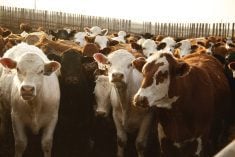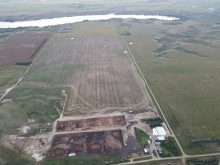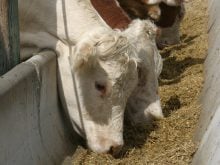Lameness a concern | British study examined ways to improve flooring and hygiene
RED DEER — Lameness is the likely cause if a cow walks like it is wearing tight shoes.
“People are pretty blind to lameness. They don’t see a lame cow and it takes a long time for lameness to develop,” said animal welfare specialist Dan Weary.
“It is like getting a symphony to work,” he said in an interview at the recent Western Dairy Seminar in Red Deer.
“There are a thousand little things, but they all have to come together at the perfect time to make music or make ugly noise.”
Read Also

More work wanted on removing red tape
REGINA — Canadian farmers risk falling further behind competitors if two main federal agencies don’t become more efficient and responsive…
Weary studies lameness and cow comfort at the University of British Columbia but finds that getting the information out to farmers is a challenge.
He said farmers often learn better from each other.
Dairy Farmers of Canada recently released its new code of practice that focuses on cattle comfort and welfare.
Its best management practices include stalls that offer enough room for the cow to lay down comfortably for up to 12 hours per day. The stalls should also be built so a cow can rise comfortably and minimize injuries to knees and hocks.
Modern cows are bigger and need more space in their stalls and better placement of neck rails. Standing on concrete is especially hard on feet, so floor improvements are always being tested.
While the information is available, Weary said it is not always passed on to engineers who design barns.
“The barn builders haven’t necessarily been where they should be,” he said.
Foot problems among dairy cows are universal.
Becky Whay of the University of Bristol’s veterinary school described a British program in which veterinarians worked with a small group of farmers to control or prevent lameness.
“Our problem is lameness isn’t going down in our dairy herds des-pite all the research that is being done to try and understand the problem,” she said at the dairy seminar.
“Lameness costs farmers far too much money and foreshortens the life of cows that would otherwise be productive animals.”
Whay said farmers understand the problem but are slow to adopt improvements. She speculated that a shortage of time and labour to improve cow conditions may be the culprit.
“Farmers knew a lot about how to reduce lameness. The difficulty was when you work a lot of hours and you are busy and tired, how do you find time to fit those changes in,” she said.
“We don’t get very good implementation of information on farms.”
A University of Bristol study found that farmers reported one-quarter of their cows were lame in 2000. That had increased to one-third 10 years later.
Farmers in the study said lameness was their number one issue, followed by tuberculosis, mastitis and fertility.
Researchers also learned that the average dairy farmer in the United Kingdom is 59 to 61 years old. Many are isolated, complain that they do not have enough help, do not want unsolicited advice and do not want to fill out more surveys or read more research papers. Cost did not seem to be the limiting factor in making changes.
The university embarked on a three year program to work with a small group to assess risks and decide what changes are possible.
“Each farmer is the expert on his farm. We need to pay due consideration to that,” she said.
Researchers worked closely with 117 producers. Lameness levels were scored and farmers were given additional help from veterinarians who assessed risks and made recommendations on flooring and hygiene. Farmers were allowed to select their own risk factors and decide what changes to make.
Another 72 farmers were monitored once a year without support.
About one-third of the cows on all the farms had lameness problems.
The farms that were monitored and received help made greater strides, but improvements were not well sustained by the end of the project.
For example, many farmers adopted better flooring, but improving hygiene was a problem partly be-cause of the wet conditions on British farms.
Researchers found that most farms made changes, and lameness was detected in about 20 percent of the cows.
“It doesn’t feel like a huge victory, but it was a positive step,” she said.
In Alberta, the University of Calgary is researching lameness and longevity.
The research team is looking for farmers who use free stalls with at least 75 milking Holsteins and no access to pasture and are enrolled in the Alberta hoof health project and the dairy herd improvement program.
Information on barn design and farm management will be collected through a questionnaire.
Researchers also want to select 40 cows that are 10 to 120 days in milk. They will record individual information on laying time, injuries, cleanliness, body condition score and locomotion scores. Farmers will receive reports.
To enroll in the research project, contact Karin Orsel at the University of Calgary veterinary school at karin.orsel@ucalgary.ca or call 403-220-3823.


















